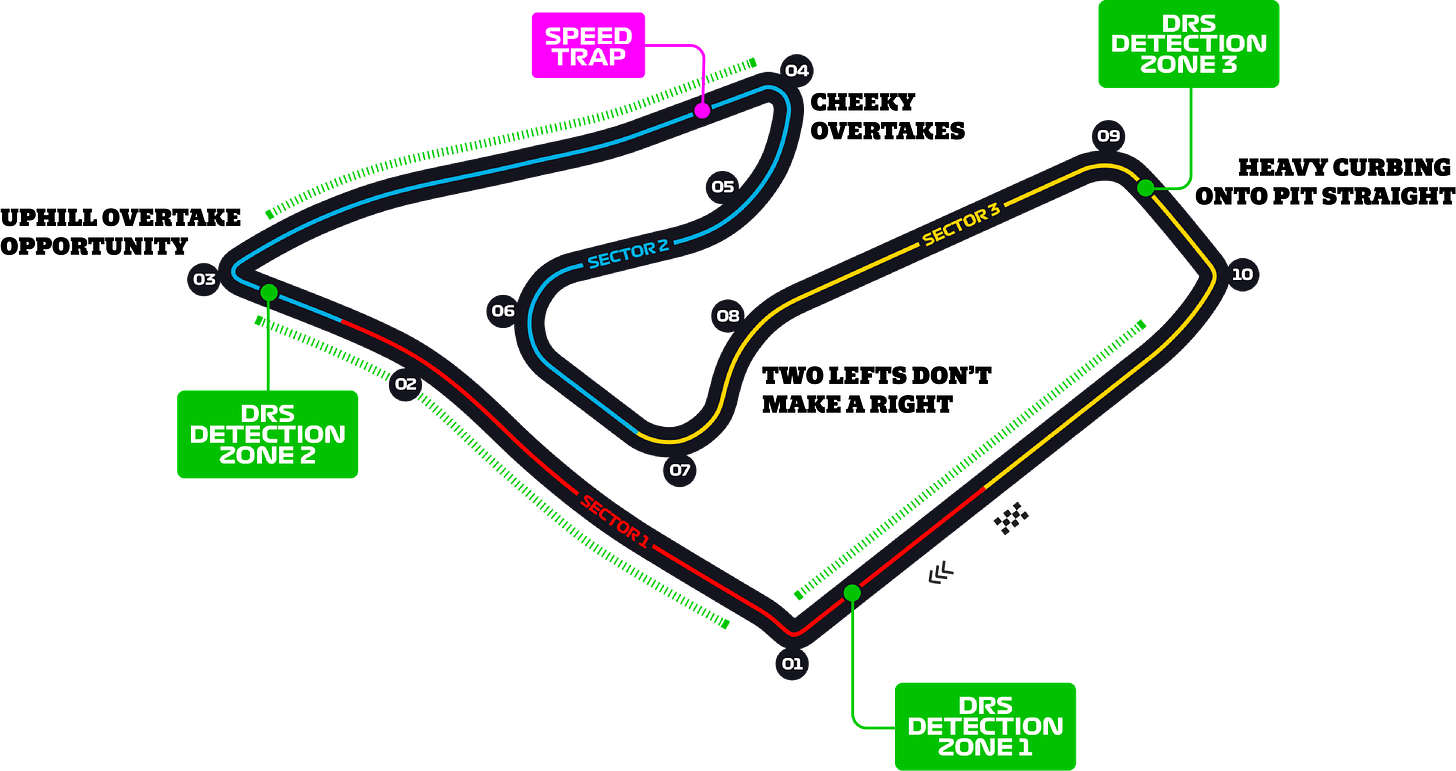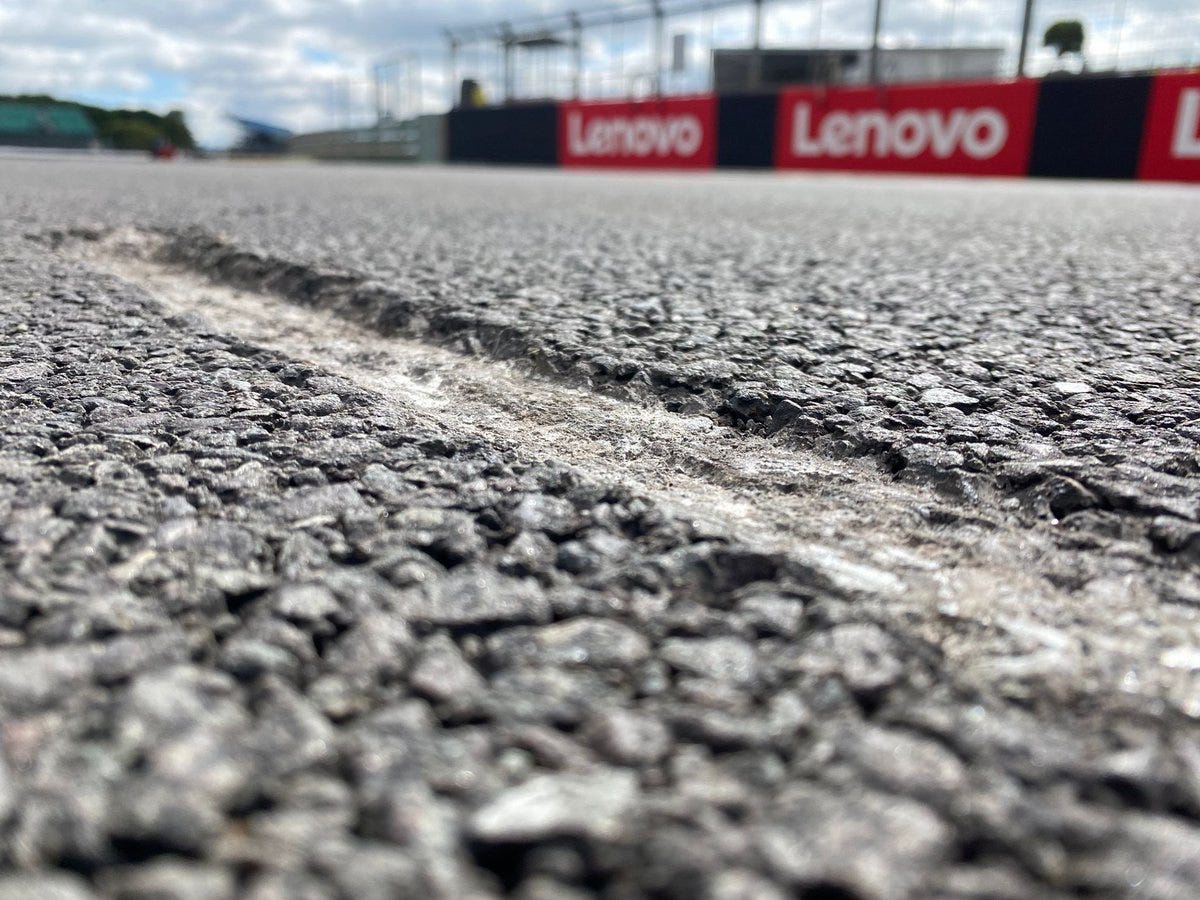Fuckin-A-Rarri. Have you not won 15 Drivers’ Championships, 16 Constructors’ Championships and 242 races? I know it’s been a while, but act like you've been there before. I have never been so thrilled for a team win like Sainz, while being so utterly depressed at how badly you can fuck things up along the way. At this point it’s just kind of impressive. It's like The Producers are making Race Day for Hitler.
In spite of Binotto’s best efforts, Sainz stood his ground to take an impressive first win. Like Perez in Monaco, both showed the backbone and determination to stand up to their heavily favored teammates, which is no easy feat. Valterri recently confided that he almost quit F1 after failing to win a single race against Hamilton in 2017. And luckily for us he kept with it, mostly so we could have the infamous "To whom it may concern, fuck you" after his maiden win the next year.
All teams, especially Ferrari, have a number one driver whether they admit it publicly or not. From the start of the race in Silverstone, Ferrari was uncomfortable with the positioning and it showed. It drives me crazy when a team is playing up the faux-fairness and deal making on the track while both drivers suffer. Just make a decision and stick to it.
After the race in a thinly veiled jab at both Ferrari (and Mercedes last year), Christian Horner said that pitting from first place is one of the hardest decisions you can make in F1. No body wants to throw away a race win with an errant pitstop, but heavy is the head that wears the crown on the pit wall and decisions have to be made. Cough cough…
The real question is: Could the 12 seconds that it took Ferrari to make that fateful pit decision with Leclerc cost them his confidence and the season?
After the Sainz win, half of the grid are now race winners. Can he now bring that Big Win Energy to Austria? I think we will see Verstappen back at the front after a flukey piece of debris got stuck in his floor costing him almost 2 seconds a lap. Lando has been hot at Austria in the past, so maybe he can drag the McLaren across the finish line. But the big X-Factor is if Mercedes can pull off two competitive races back to back.
Austria is one of the shortest tracks of the year and with 8 right handers and only two left corners, it’s practically a NASCAR in the alps. While it may not be overly complex, it does take some technique to master. The elevation changes across the track can catch drivers out and overtaking is possible if you are opportunistic. Definitely keep an eye on the last two corners which essentially act as a big sweeping right onto the pit straight. Drivers like to run wide here despite the serrated curbs.
On the tech side, I wouldn’t be surprised if we heard more than one driver complain about floor damage from the curbing around the track. Additionally, because of imbalance of corners, some teams like Alpine like to run asymmetric cooling and parts on the car which is a bit of an oddity. Also in Trump-like fashion, Red Bull’s Helmut Marko is now claiming that their engine has a special turbo that works better at higher altitudes like Austria where there is less oxygen . Sounds like bullshit to me, but we shall see.
Also because there’s nowhere else to put it, shoutout to the Vettel and Mick Schumacher K-Drama bromance. Just wait until Vettel runs Mick off the road for Aston’s only point of the year. Then Mick reveals that he’s secretly been working for bad guy Stroll all along. Before they are reunited at Haas with Guenther and live happily ever after.
The most impressive, but often forgotten feat of F1 isn’t the speed or the power, it’s the safety. We’ve seen Romain Grosjean’s fiery explosion, Alonso flip his way down Melbourne, Verstappen take 51Gs of side impact at Silverstone last year, and Massa took a metal spring to the face at 150mph. Shockingly, most drivers walk away unscathed just like Zhou. So what makes an F1 car so safe?
Hidden inside the body work are 5 main impact structures that can absorb almost 100 times the car’s bodyweight in a crash. Each one is connected to the car’s survival cell which houses the driver and is the last line of defense in a crash.
Counter intuitively these crash structures are made to break. In a head-on crash, the over 3 feet of solid carbon fiber in the nose can be crushed down into just a couple of inches. It may look like its crumbled, but the the carbon fiber is weaved together in a way that peels back, absorbing the impact before it reaches the driver and the rest of the car.
While the front, rear and side crash structures are there to absorb all the energy in a crash, the Roll Hoop and Halo are virtually impossible to break. The Halo is made out of solid titanium and despite weighing just over 15 lbs it can survive having a double decker bus (25,000 lbs.) dropped on top of it. Likewise, the titanium Roll Hoop is incorporated into the airbox and secured directly to the chassis. For a peek at how strong it is, just look how Zhou’s roll hoop carved out about a half inch of track at Silverstone.
While Zhou managed to walk away, there were still issues with track design that compounded the crash. For example, the gap between the fencing and tirewall trapped him inside the car and will likely be reviewed by the FIA for future races. Additionally, similar curbing to the one that sent Zhou airborne also launched an F2 driver straight into the halo of another car. Even the strangest, flukiest crash is a learning lesson for F1. For more, I highly recommend checking out the FIA’s safety instagram, it’s a smidge macabre but fascinating. www.instagram.com/fia_safety/
One of the loyal and avid readers (they exist!) of the #FormationLap™ wanted to know why it’s perfectly normal for drivers to sign contracts mid-season. Frankly, it is a little deranged to keep racing for a team that you are about to leave. But unlike most sports that have heavily regulated free agency windows, it's even crazier than you could imagine.
The details of the contracts are often kept secret, but many of them are tied to team performance. If the team is unable to hit a certain championship standing, the contract could allow a driver to leave for another higher placed team. While the teams may want you to think that they have just signed a new driver, many of these deals have been in the works for years.
Felipe Massa revealed that he signed a secret 8 year contract with Ferrari before he reached F1 and 4 years before he drove for Ferrari. After Nico Rosberg retired, Vettel signed a pre-contract with Mercedes for 2 years down the road. Although he stayed at Ferrari, it gave him the option to join up with Mercedes if certain performance measurements were met. And Lewis Hamilton signed his first contract with McLaren back when he was just a kid in go-karts.
But these contracts and options are a double edged sword as Daniel Ricciardo is about to find out. Despite his insistence that there is a “Black and White” contract until the end of next year, there is breakage for driver performance. And with Ricciardo on his third team with little to show for it, who knows where he could end up next, if anywhere.
So where does that leave the field? Verstappen signed a rare 5 year deal that will keep him with Red Bull until 2028… Lando is at McLaren until 2025… Sainz and Leclerc are both at Ferrari until 2024… Ocon, Perez, Bottas are also signed to their respective teams through 2024… The rest of the field is on until 2023 except for the rookie drivers. And Lance Stroll’s deal probably just says “Forever. From, Father” and is signed in blood mixed with platinum.
“Fernando is faster”… “Multi-21”… “Not bad for a number two driver”… The stinging messages of infamous team orders. They can give you the championship or tear the team apart. And there's no better example than the infamous 1992 Austrian Grand Prix.
Twenty years ago, Ferrari didn’t suck, they were actually really good. Current F1 head-honcho, Ross Brawn, was the technical director, Michael Schumacher was untouchable and Reubens Barrichello played the perfect wingman. Schumacher won the first five races of 2002 and then came Austria.
After getting pole position, Ferrari asked Reubens to pull aside for Schumacher. Begrudgingly, Reubens slowed by just enough to give Schumacher a .2 second victory, the closest ever in F1 history. The podium was a disaster, crowds booed, Schumacher tried giving Reubens the trophy and top step, just an absolute joke. Ferrari, Schumacher, and Barrichello were fined $1 million for their antics. But it wasn’t because of the team orders, it was for messing with the podium ceremony (Got to protect the champagne.)
Did Schumacher win the championship by just those critical points and it was all worth it? Spoiler alert: Nope. Ferrari went on a rampage. Schumacher came in first or second in all but one race where he placed third. He won the drivers’ championship with 6 races to go and ended with nearly double Reubens’ points. And Ferrari had more constructors’ points than every other team combined. In response, the next season team orders were banned, before being reinstated in 2010 because they are completely unenforcible.












